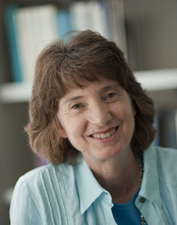Model Improves Breast Cancer Risk Prediction in African American Women.

Led by Julie R. Palmer, professor of epidemiology at the School of Public Health, researchers from the Slone Epidemiology Center have developed a breast cancer risk prediction model for African American women that shows greater accuracy in predicting risk for the disease than previous models. The use of the model could result in increased eligibility of African Americans in breast cancer prevention trials, the authors said.
In the study, published in the Journal of Clinical Oncology, the research team used prospective data from 55,000 African American women enrolled in the Black Women’s Health Study to develop a breast cancer risk-prediction model specifically for African American women. It included family history of breast cancer, history of benign breast disease, age at menarche, age at first birth, bilateral oophorectomy, oral contraceptive use, hormone use, body mass index at age 18, and adult height.
“The model was well calibrated, in that it predicted 486 cases, in comparison to an observed 506 cases during the additional five years of follow-up,” said Palmer, senior epidemiologist at Slone. Based on the Black Women’s Health Study model, 14.6 percent of women ages 30 to 69 were predicted to have a five-year risk of at least 1.66 percent. “This is considerably higher than the proportion predicted by previous models to be above that end point,” she said.
The effectiveness of breast cancer prevention depends in part on the ability to accurately identify individuals at increased risk of the disease. Models for predicting absolute risk of breast cancer have been used for chemoprevention decision-making and for determining eligibility for recruitment into prevention trials.
The well-respected Gail Model has been used widely for breast cancer risk prediction in white women, but has been shown to underestimate risk in African American women. Underestimation of risk for African American women has contributed to their underrepresentation in breast cancer prevention trials. According to the researchers, previous breast cancer risk prediction models for African American women have used information on only a few factors. The new model “appears to improve prediction and, if used for determining eligibility for entry into prevention trials, would likely result in a greater number of African-American women invited to enroll in the trials,” Palmer said.
Funding for the study was provided by the Susan G. Komen for the Cure Foundation and the National Cancer Institute.